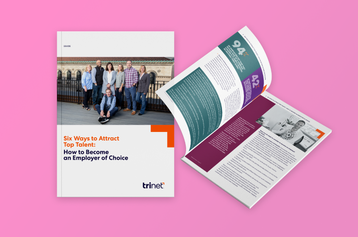Trends & Insights
Latest

HR Essentials
Your Complete Guide to HRO for Small Businesses
HRO for small businesses can improve your efficiency and overall operations. Are you missing out on 9 key benefits from HR outsourcing?
December 16, 2025 ・14 mins read
Read more
Culture
Cultural Competence in the Workplace: What Employees Need to Know
Cultural competence in the workplace is the willingness and ability to embrace diversity and appreciate the differences in people.
December 11, 2025 ・6 mins read
Read more
Talent
Furloughed vs Laid Off: Advantages, Disadvantages, and Differences
More and more companies are furloughing or laying off employees due to the coronavirus. Know the differences of each.
December 10, 2025 ・10 mins read
Read more
HR Outsourcing
HR Outsourcing Costs: The Complete Guide
December 15, 2025 ・12 mins read
Read more
HR Outsourcing
Recruitment Process Outsourcing: Should Your Business Consider It?
December 12, 2025 ・8 mins read
Read more
Talent
What is Talent Management, and How is it Different From HR?
December 11, 2025 ・5 mins read
Read more
How to Investigate a Claim of Sexual Harassment
A respectful, professional culture does not tolerate sexual harassment. It’s critically important to investigate and resolve the charge immediately.
December 9, 2025 ・20 mins read
Read more

HR Essentials
Your Complete Guide to HRO for Small Businesses
HRO for small businesses can improve your efficiency and overall operations. Are you missing out on 9 key benefits from HR outsourcing?
December 16, 2025 ・14 mins read
Read more
HR Outsourcing
HR Outsourcing Costs: The Complete Guide
December 15, 2025 ・12 mins read
Read more
HR Outsourcing
Recruitment Process Outsourcing: Should Your Business Consider It?
December 12, 2025 ・8 mins read
Read more
Talent
What is Talent Management, and How is it Different From HR?
December 11, 2025 ・5 mins read
Read more
Culture
Cultural Competence in the Workplace: What Employees Need to Know
Cultural competence in the workplace is the willingness and ability to embrace diversity and appreciate the differences in people.
December 11, 2025 ・6 mins read
Read more
Talent
Furloughed vs Laid Off: Advantages, Disadvantages, and Differences
More and more companies are furloughing or laying off employees due to the coronavirus. Know the differences of each.
December 10, 2025 ・10 mins read
Read more
How to Investigate a Claim of Sexual Harassment
A respectful, professional culture does not tolerate sexual harassment. It’s critically important to investigate and resolve the charge immediately.
December 9, 2025 ・20 mins read
Read more
Top Resources

E-GUIDE
6 Ways to Attract Top Talent
Bringing in the best and brightest employees can improve productivity, innovation, company culture and brand recognition, all of which contribute to your success. Get our six steps for becoming a ...
Get eGuide
E-GUIDE
The Benefits of Employee Benefits to SMBs | Download eGuide
A innovative benefits offering helps attract and keep the talent you need to succeed. But do you know what benefits your employees want? Find out with our latest eGuide.
Get eGuide
E-GUIDE
Learn how TriNet’s comprehensive HR solutions can help your business.
Fill out the form and we’ll contact you to set up a time to chat.


